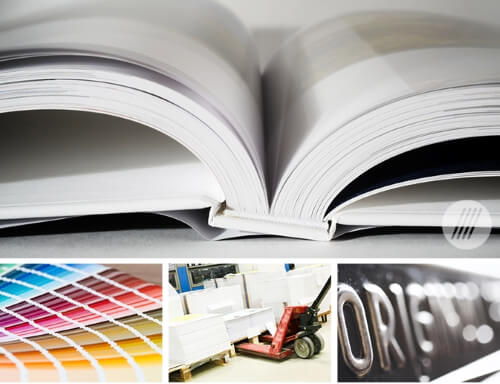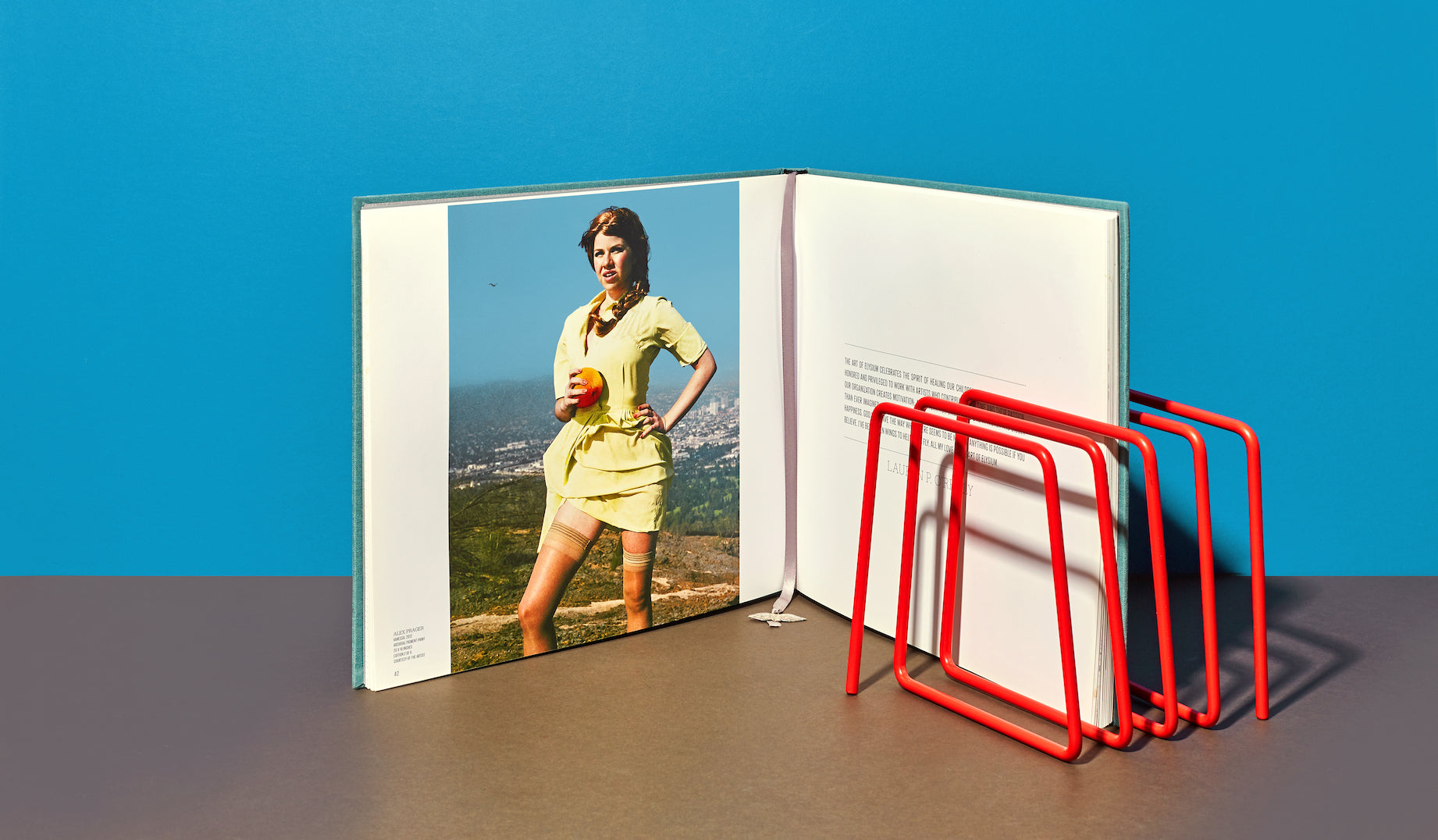What Makes a Eye-Catching art book? Learn the Core Elements
What Makes a Eye-Catching art book? Learn the Core Elements
Blog Article
Navigating the World of Art Book Printing: Idea for a Remarkable Finish
When it comes to art book printing, you require to mix imagination with technical knowledge for the finest results. Allow's discover what that is and exactly how it can elevate your art book.
Understanding the Printing Process
When you submerse on your own on the planet of art book printing, understanding the printing procedure is critical for achieving your preferred results. Begin by acquainting on your own with different printing methods, like electronic and balance out printing. Each approach has its toughness, so consider your task's range and budget plan.
Next, focus on color administration. Make certain your photos remain in the appropriate shade account, as this affects how they'll appear in print. You'll also desire to select the best resolution-- 300 DPI is common for top notch prints.
Don't neglect the importance of proofing. Constantly request an evidence before the last print go to catch any kind of errors or disparities in color. Ultimately, keep in mind that timing matters. Review production timelines with your printer to assure your job remains on schedule. Understanding these facets can considerably boost the high quality and total look of your art book.
Selecting the Right Paper
Picking the appropriate paper can significantly influence the overall feel and look of your art book. You'll intend to review variables like weight, texture, and surface. A much heavier weight paper can offer your images a more lavish look, while lighter documents could really feel more delicate.
Structure plays an essential function as well; shiny paper enhances shades and information for vibrant pictures, while matte paper uses an extra subdued and artistic appearance. Consider how you want your artwork to be viewed-- do you like sharp contrasts or softer sides?
Do not neglect to evaluate samples before making a final decision. This will help you visualize exactly how your art engages with various documents. Bear in mind, the appropriate selection can boost your book from ordinary to amazing, ensuring your innovative vision radiates through in every page. So take your time, explore options, and select intelligently for the very best outcomes.
Exploring Binding Alternatives
When it pertains to binding your art book, you've got numerous choices to consider that can affect both the feel and look of your project. Think of the resilience features you require, in addition to the cost effects of each binding technique. Choosing the right binding can raise your artwork and ensure it lasts for years ahead.
Kinds of Binding Techniques
There are a number of binding approaches to ponder for your art book, each offering distinct advantages and visual appeals. For a more imaginative touch, consider spiral binding; it enables your book to lay level, showcasing your art work perfectly. Each binding technique has its appeal, so think concerning your book's function and target market to choose the one that ideal enhances your vision.

Picking Longevity Features
After considering the various binding techniques, it's time to concentrate on toughness attributes that can enhance the longevity of your art book. Selecting a durable binding choice is essential; consider options like situation binding or lay-flat binding, which offer extra toughness. Furthermore, take note of the type of sticky utilized; a high-grade PVA glue can ensure the pages stay protected gradually. If you anticipate your book to withstand frequent handling, select materials like laminated covers or coated paper, which withstand damage. Ultimately, think of just how you'll store guide-- utilizing a protective slipcase can add an added layer of protection against dust and damages. Focus on these attributes to keep your art book looking beautiful.
Cost Implications of Binding
While selecting a binding alternative for your art book, it's vital to ponder exactly how each selection affects your budget plan. Saddle sewing is much more economical, excellent for smaller publications, yet it might not fit larger projects. Ultimately, choosing the right binding option can boost your art book's presentation without damaging the financial institution.
Designing for Publish
When making for print, you require to focus on clearness and visual impact to effectively display your art work. Begin by choosing a color scheme that enhances your pieces, ensuring it converts well on paper. Keep in mind that shades might appear in a different way in print than on-screen, so choose tones that preserve vibrancy when printed.
Usage high-resolution pictures to avoid pixelation; goal for at the very least 300 DPI for peak high quality. Consider your typography thoroughly-- select font styles that enhance your art without subduing it. Maintain an equilibrium between message and visuals, making sure that neither distracts from the various other.
Focus on format and white space, as these aspects assist the customer's eye and develop a harmonious circulation. Lastly, assume regarding the dimension and measurements of your book; it ought to boost your artwork, not constrict it. By focusing on these facets, you'll create a magnificent print style that mesmerizes your target market.
Proofing Your Artwork
As soon as you have actually settled your layout, it's time to proof your artwork to verify every little thing looks as planned. If your art work is vibrant on-screen, but dull on paper, adjustments might be necessary.
Print a test proof to see how your design translates to paper. This step supplies beneficial insights right into shade, comparison, and format. Do not wait to request for responses from trusted peers or coworkers-- they may capture problems you neglect. Lastly, make specific your artwork sticks to any type of certain standards your printer needs, such as bleed and trim lines. An extensive proofing process guarantees that your end product shows your difficult work beautifully.
Working With a Printer
When you're all set to publish your art book, finding the right printer is important. You'll require to plainly communicate your vision and understand the printing requirements to ensure whatever transforms out as anticipated (art book). Let's discover exactly how to make this procedure smooth and effective
Choosing the Right Printer
Selecting the ideal printer can make all the distinction in bringing your art book vision to life. Research regional and on the internet printing firms, paying go attention to their portfolios and client testimonials. view You desire a printer experienced in art books, as they'll understand the nuances of duplicating your artwork consistently.
Connecting Your Vision
To assure your art book comes out simply as you picture, it's important to interact your vision clearly with your printer. Beginning by sharing your innovative concept, consisting of styles, shades, and any kind of certain elements you desire highlighted - art book. Be open regarding your budget and timeline; this aids your printer offer reasonable options.

Understanding Printing Requirements
With your vision clearly verbalized, it's time to concentrate on the technical side of printing your art book. Recognizing printing requirements is vital for attaining the perfect result. Begin by discussing your wanted paper kind; options like glossy or matte can substantially impact the aesthetic appeal. Next, take into consideration guide's measurements-- basic dimensions are usually more affordable, however custom sizes can enhance your distinct style. Don't fail to remember to inspect the resolution of your pictures; they need to be at least 300 DPI for crisp prints. Clarify your shade choices-- CMYK is standard for print, while RGB is utilized for electronic. By knowing these specs, you'll ensure a smoother partnership with your printer and a spectacular final product.
Marketing Your Art Book
Advertising your art book effectively can make all the distinction in reaching your audience and enhancing sales. Are they art lovers, enthusiasts, or trainees? Showcase your art work, share behind-the-scenes web content, and engage with your followers via stories and blog posts.
Consider organizing a launch event or joining art fairs to get in touch with possible buyers directly. Team up with influencers or blog owners in the art neighborhood to increase your reach. Don't undervalue the Read Full Article power of email advertising; construct a mailing listing to maintain interested visitors updated.
Lastly, take advantage of online markets and your internet site for direct sales. Offer minimal editions or special promos to develop seriousness. By incorporating these techniques, you'll boost presence and drive sales for your stunning art book.
Frequently Asked Concerns
What Is the Ordinary Price of Art Book Printing?
The average cost of art book printing varies commonly based upon factors like size, page matter, and products. Usually, you're looking at anywhere from $10 to $50 or more per book, depending upon your selections.
How much time Does the Printing Process Typically Take?
The printing process normally takes concerning 2 to 4 weeks, relying on the task's intricacy and quantity. You'll require to consider style, proofing, and prospective modifications to ensure whatever satisfies your assumptions.
Can I Print a Restricted Edition of My Art Book?
Yes, you can publish a limited version of your art book. Simply determine just how several duplicates you desire, select a high quality printer, and assure you've obtained the appropriate products to produce a special feel.
What File Formats Are Best for Printing My Art Work?
For publishing your art work, use high-resolution files like TIFF or PDF. Stay clear of JPEGs for last prints, as they can shed detail.
How Can I Make Certain Shade Accuracy in My Printed Schedule?
To assure color precision in your published book, use a calibrated monitor, soft evidence your data, and choose a trusted printing solution. Likewise, consider making use of RGB or CMYK shade modes as required for your artwork.
Report this page